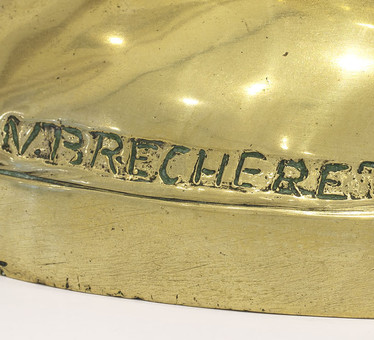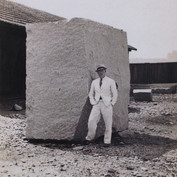Victor Brecheret

Farnese, Italy, 1894 —
São Paulo, Brazil, 1955
Among the major productions that make up the Brazilian modernist movement, Victor Brecheret’s sculpture is perhaps the best example that beauty comes close to the truth.
Formed in Rome during the 10’s, his initial works are deeply influenced by Rodin and Meštrović. Works such as Eva and Idol (both from 1919), exhibited in the Week of 22, show a complete mastery of sculptural technique applied in a naturalistic representation of human anatomy, in which the games of shadow and light are combined with tense muscles and body torsions to give the figures a contained drama. In the 1920s Brecheret returned to Europe, landing this time in Paris. Impacted by avant-garde innovations, especially those of Cubism and Art Deco, the initial drama of the work gives way to a greater stylization of lines and formal synthesis, as is wonderfully exemplified in the Pietá represented in the work Mise au Tombeau (1923-1927 ), which can be seen at Consolação Cemetery, in São Paulo. After the artist’s reestablishment in Brazil, especially after the 1940s, Brecheret’s sculptures began to incorporate nativist and primitivist themes when the artist turned to indigenous religiosity and culture. Some of the works from this period tend to abstraction, such as The Indian and Swahili (1951), while in others the sculptor inscribes engravings and graphics on rounded stones, such as A India hidden by a large fish (1947-1948).
Perhaps the best known work by Brecheret is the 1921 Monument to the Flags, whose construction extends from 1936 to 1953. In this work, of immense proportions, elements of his entire career are synthesized. The sculptor carves in granite, with stylized lines and great formal synthesis, figures that allegorize the campaigns of the São Paulo bandeirantes in the hinterlands. Indians, blacks and whites are represented there in a symbol of Brazil’s social formation, complementing us with the painful legacy of colonization.
For all these reasons, despite his Italian origin, Brecheret is a Brazilian modernist in his own right. After all, his work is one of the first expressions of rupture on the national scene with academic art. But, far beyond that, Brecheret successfully accomplishes anthropophagy by incorporating foreign novelty to generate something genuinely Brazilian. For its great subject is, although sometimes mythical and legendary, the past of Brazil. In this, his work becomes monumental, since in it the past reveals itself as a source of action, reparation and aspiration. Thus, the past is discovered as an inexhaustible power that defies the future, while it renews the past by always projecting it beyond the mere already happened.
